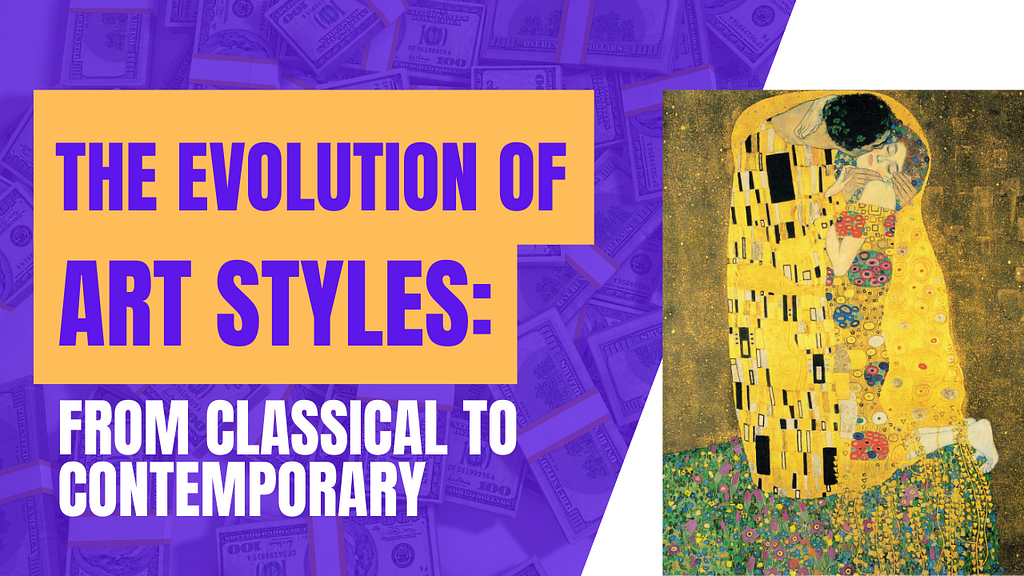
Art has been an intrinsic part of human expression for centuries, evolving through various styles that mirror the cultural, social, and technological shifts of each era. From the classical masterpieces of ancient civilizations to the avant-garde experimentation of contemporary artists, the evolution of art styles is a fascinating journey that reflects the dynamic nature of human creativity.
1. Classical Art: The Foundation of Aesthetic Beauty
The classical period, spanning from ancient Greece to the Renaissance, laid the foundation for Western art. Artists of this era aimed for idealized representations of the human form, emphasizing symmetry, balance, and proportion. An exemplary work from this period is Michelangelo’s “David,” a marble sculpture that epitomizes the classical pursuit of perfection.
2. Baroque Art: Drama and Emotion Unleashed
In the 17th century, the Baroque movement emerged as a response to the rationality of classical art. Baroque artists sought to evoke strong emotions through dynamic compositions, dramatic lighting, and intense realism. Caravaggio’s “The Calling of Saint Matthew” is a prime example, with its use of stark contrast and theatricality.
3. Romanticism: The Celebration of Emotion and Nature
As the Industrial Revolution transformed societies, the Romantic movement emerged in the late 18th century. Romantic artists embraced emotion, individualism, and the sublime. J.M.W. Turner’s “The Slave Ship” captures the power of nature and the human spirit, reflecting the Romantic emphasis on emotion and the untamed forces of the natural world.
4. Impressionism: Capturing the Moment
The late 19th-century Impressionist movement shifted the focus from detailed realism to capturing the essence of a scene. Artists like Claude Monet and his “Water Lilies” series used loose brushstrokes and a focus on light to convey the fleeting nature of a moment, challenging traditional artistic conventions.
5. Cubism: Breaking Down Reality
As the 20th century dawned, Cubism emerged as a revolutionary art movement. Pioneered by Pablo Picasso and Georges Braque, Cubist art sought to represent multiple perspectives simultaneously, breaking down objects into geometric shapes. Picasso’s “Les Demoiselles d’Avignon” is a landmark piece that exemplifies the fragmented and abstract nature of Cubist art.
6. Abstract Expressionism: Emotion on the Canvas
Following World War II, Abstract Expressionism became a dominant force in the art world. Artists like Jackson Pollock embraced spontaneity and gestural abstraction to convey raw emotion. Pollock’s “Number 1A, 1948” is a chaotic yet expressive masterpiece that captures the essence of this movement.
7. Pop Art: Art in the Age of Mass Media
In the 1950s and 60s, Pop Art emerged as a reaction to the consumer culture of post-war America. Artists like Andy Warhol celebrated mass production and popular culture. Warhol’s “Marilyn Diptych” is a prime example, featuring the iconic image of Marilyn Monroe repeated in a grid, reflecting the proliferation of images in contemporary society.
8. Contemporary Art: Diversity and Multidisciplinarity
In the 21st century, art has become more diverse and multidisciplinary than ever. Contemporary artists often blend traditional techniques with new media, addressing complex issues such as identity, technology, and globalization. Banksy’s politically charged street art, like “Girl with a Balloon,” exemplifies how contemporary artists engage with current social and political narratives.
The evolution of art styles is a testament to the ever-changing nature of human expression. From the pursuit of perfection in classical art to the fragmented perspectives of Cubism and the diverse approaches of contemporary art, each movement reflects the zeitgeist of its time. As we continue into the 21st century, the trajectory of art remains unpredictable, promising new innovations, challenges to convention, and a continued exploration of the human experience. Art, in all its forms, will undoubtedly continue to be a mirror reflecting the complexities of our ever-evolving world.
The Evolution of Art Styles: From Classical to Contemporary was originally published in Educartion on Medium, where people are continuing the conversation by highlighting and responding to this story.